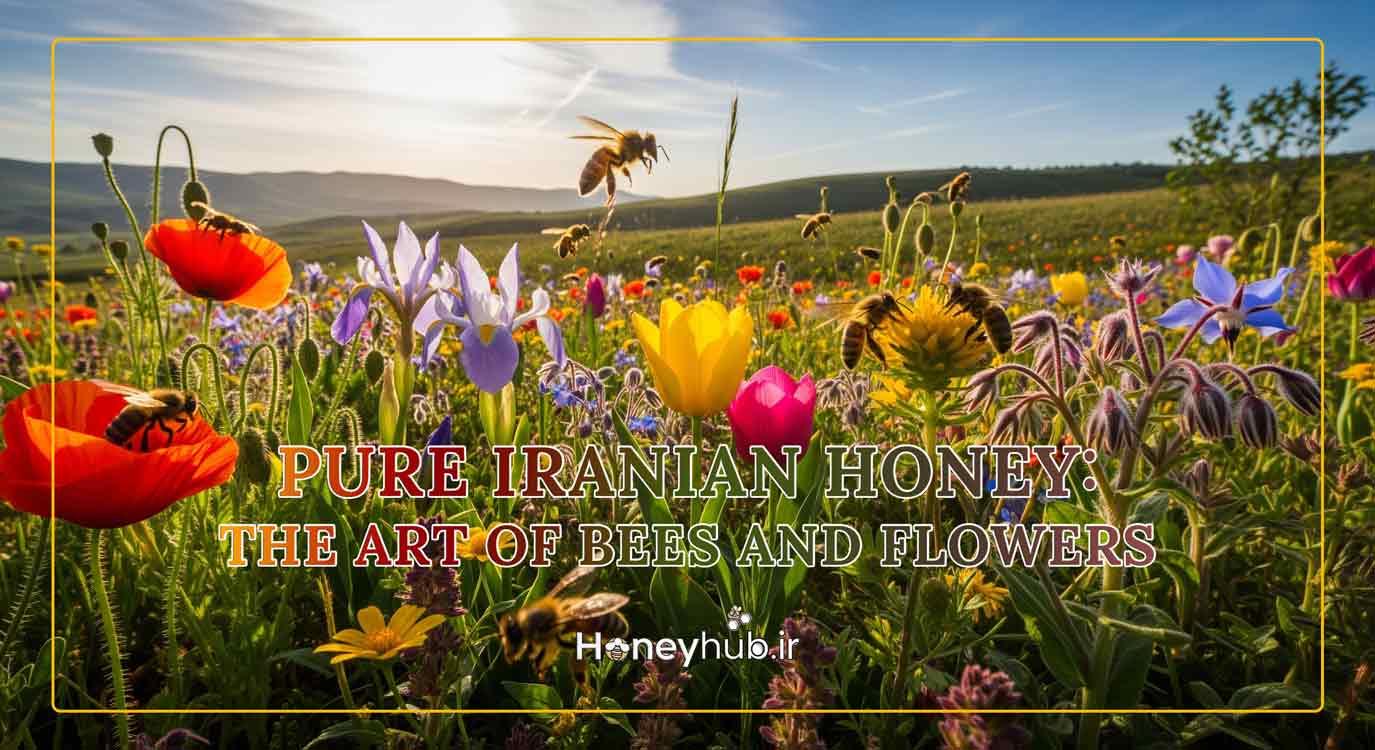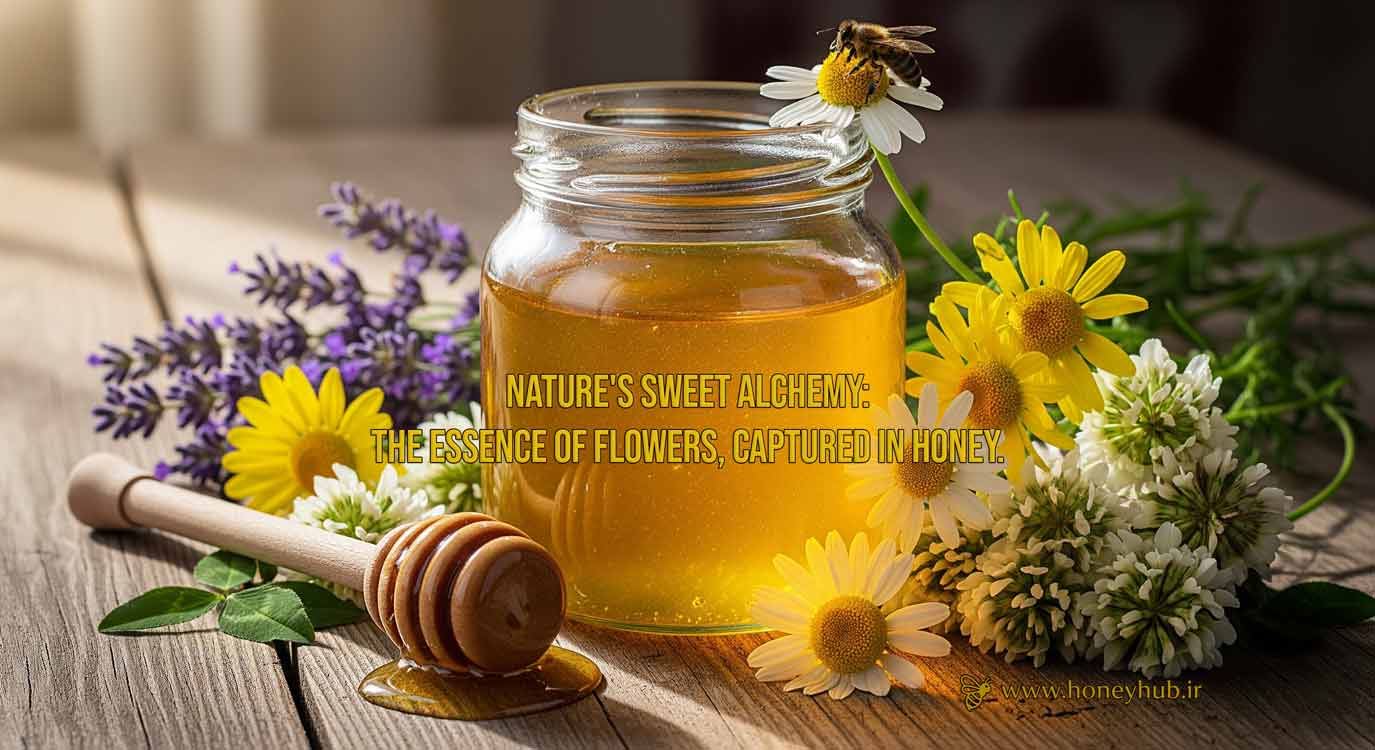Did you know seasonal changes affect your health, mood, and even your genes? Discover how to sync with nature and use...
Iran's Plant Diversity and the Vital Role of Honeybees in Pollination
A scientific journey into Iran’s nectar-rich regions: Zagros, Sabalan, Alborz, and Khojir

Introduction
Iran, with its unparalleled climatic, geographic, and biological diversity, is one of the world’s most important nectar-rich pastures and forests. From the slopes of Mount Sabalan to the heights of the Zagros Mountains, from the Hyrcanian forests to Khojir National Park, Iran’s native flora serves as a vital source of nectar and pollen, enabling the survival of honeybee populations and, consequently, the production of natural honey.
In this article, we provide a scientific examination of Iran’s plant diversity, the role of honeybees in pollination, key nectar-rich regions, and their connection to the production of authentic, native Iranian honey. We also analyze the importance of botanical atlases for professional beekeepers.
Geographic and Climatic Diversity of Iran
Iran lies at the intersection of three major climate zones—Mediterranean, continental, and arid—resulting in the identification of seven distinct phytogeographic regions:
- Caspian Region (Alborz)
- Zagros Region
- Sabalan and Ardabil Region
- Khuzestan Region
- Lut Desert Region
- Southeastern Region
- Central Desert Region
Each of these regions has a unique flora critical for professional beekeeping. Unfortunately, a 30% reduction in vegetation cover in some areas (Department of Environment, 1401) threatens the production of natural honey.
Iran’s Vegetation: A Biological Treasure
According to the latest studies from the Herbarium of the University of Tehran (1402), Iran’s flora includes:
- 167 families of vascular plants
- 1,215 genera
- Approximately 8,000 taxa (including species, subspecies, varieties, and hybrids)
- 1,810 endemic (native) species
This diversity makes Iran one of the 17 megadiverse countries in the world. Plants such as Ziziphora clinopodioides (Persian savory), Thymus kotschyanus (mountain thyme), and Onobrychis cornuta (horned sainfoin) are among the most important nectar-producing plants.
The Role of Honeybees in Pollination
The honeybee (Apis mellifera) is the most important pollinator in Iran’s ecosystems. Approximately 75% of Iran’s plant species depend on insect pollination (FAO, 2023).
Pollination by bees increases fruit yield, quality, and seed production by up to 40%. This is especially critical for fruit orchards and oilseed crops.
Iran’s Nectar-Rich Regions
The following regions are among Iran’s most important bee-friendly zones due to their high plant diversity and long flowering seasons:
| Region | Key Nectar-Producing Plants | Flowering Season | Type of Honey Produced |
|---|---|---|---|
| Hyrcanian Forests (Alborz) | Lotus, mulberry, Madonna lily, thyme | Farvardin to Shahrivar | Mulberry forest honey |
| Zagros Mountains | Persian savory, thyme, chamomile, knapweed | Ordibehesht to Mehr | Mountain savory honey |
| Sabalan Region | Thyme, comfrey, chamomile, mountain sainfoin | Khordad to Shahrivar | Sabalan mountain honey |
| Khojir National Park | Cypress, dogwood, chamomile | Farvardin to Tir | Mountain honey |
To download comprehensive guides on nectar-producing plants in each region, visit the following resources:
Experience Authentic Iranian Honey Today
Each jar of our honey is the result of honeybees collaborating with native flowers in nectar-rich regions. No preservatives, no diluents, no added sugar.
🛒 Buy Authentic Natural Honey























Latest comments